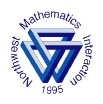Program Schedule
8:30-9:00 Registration, Pastries and Social Time
9:00--12:00: Morning Session
12:00 - 1:00 Lunch*
1:00 - 4:00 Afternoon Session
|
Morning 9:00 - 12:00
Haley Woods: Why Do We Need Traffic Cops? Incorporating Service Learning into a Math Class
(45 minutes), Lake Washington High School Math teacher
- After learning all of the material for the course, it was time to apply it! In the last 5 weeks of school, my students took a look outside our classroom at how statistics are used in our world. We read books about statistics in our society, discussed our perceptions of traffic cops, spent a day being one, and from our experience and reflection we created questions related to this topic, we conducted surveys for the school or community. After analyzing all of our data, we created a portfolio and gave a presentation to our peers, parents/guardians, and other adults in the school and community. Iíll show you how I did it and talk about how it went!
Anna Savoie: Archimedesí Ostomachion
(60 minutes), Garfield High School Math teacher
- Explore Archimedesí 14 piece dissection of a square with some surprising results!
Art Mabbott: Just back from the T^3 International Conference!
(60 minutes), Seattle Public Schools Math Coach
- Come see what's new for the nSpire. It will knock your sox off.
12:00 - 1:00 LUNCH
Afternoon 1:00 - 4:00
Randall Creek: A funny thing happened on the way to this conference...
(30 minutes), Muckleshoot Tribal School Math
- Youíve heard of comedians accused of being too topical, but when was the last time you've heard of one being too topological? A quick and hopefully humorous look at some mind- and world-stretching ideas from the summer Park City Math Institute
David Scott: What Makes a Good Math Problem for Teaching?
(60 minutes), University of Puget Sound Math
- The talk will explore some characteristics of a good problem to teach from (as opposed to a good exercise or a good contest problem) and present some examples.
Jim King: Playing with Dilations: Virtual copy machines and the Common Core State Standards
(60 minutes), University of Washington Math
- In the CCSS geometry for high school, it has been noted that transformations generally play a large role and, in particular, that similarity is introduced by means of dilations. In this session we will consider how enlargements and reductions by copy machines and computer screens fit into this picture and -- through a lot of drawing and constructing -- will try to shine some light on this part of the CCSS.
|


